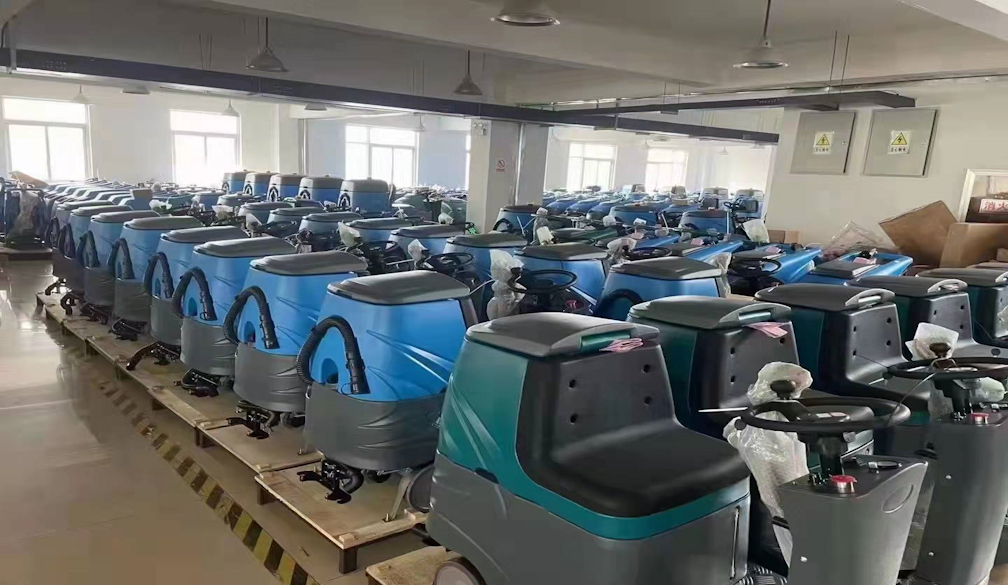Ride-On Sweepers in Construction: Cleaning Up Job Sites

Construction sites are humming centres of activity where employees, heavy equipment, and supplies for building come together to realize architectural dreams. Maintaining cleanliness and order is an important but frequently disregarded part of this well-organized chaos. In order to make construction sites productive, effective, and environmentally responsible, ride-on sweepers are crucial. This article will examine the importance of ride-on sweepers in construction, as well as their advantages, uses, and potential developments.
The Importance of Clean Construction Sites
Understanding the importance of keeping construction sites clean is crucial before getting into the mechanics of ride-on sweepers. Here are a few primary causes:
Safety First
At all times, the first focus on building sites should be safety. Accidents, tripping hazards, and injuries can result from debris, dust, and clutter. These risks are considerably diminished on a clean site, protecting both workers and tourists.
2. Efficiency and Productivity
Workplace chaos can reduce efficiency. Working past impediments or looking for tools hidden behind clutter costs workers important time. An organized, tidy site makes for easier operations and faster project progress.
3. Environmental Responsibility
It's common for construction projects to produce a lot of dust and debris. The environment could be harmed if these items are not handled correctly. Ride-on sweepers assist in managing and containing this garbage, minimizing the project's environmental impact.
Ride-On Sweepers: An Overview
Ride-on sweepers are specialist vehicles made to effectively clean huge spaces. They have strong vacuum systems and sweeping brushes to capture dust and debris into onboard containers. These robots can quickly cover large surfaces and are small and nimble. Ride-on sweepers are crucial instruments for preserving cleanliness and order in the construction sector.
Key Components of Ride-On Sweepers
Sweeping Brushes
Ride-on sweepers have one or more rotating sweeping brushes that clear the ground of trash. To accommodate various surfaces and cleaning needs, these brushes may be changed for height and angle.
Vacuum System
The dust and debris are sucked up by a strong vacuum system and sent to an onboard container for later disposal.
Hopper or Container
Depending on the size of the sweeper, the hopper or container where the collected material is kept might have a variety of capacities.
Operator Cabin
Typically, ride-on sweepers are operated from a cozy, enclosed cabin that shields the operator from noise and dust. The cleaning area may be seen well from the cabin.
Control Panel
A simple control panel located inside the sweeper's cockpit allows operators to change the sweeper's settings and operations.
Mobility Features
For ease of movement, these sweepers have strong wheels or tracks. Some types can even spin on a dime, making them appropriate for tight places.
Benefits of Ride-On Sweepers in Construction
Let's examine the particular advantages ride-on sweepers provide for building sites now that we have a fundamental idea of what they are:
Efficient Cleaning
Compared to manual cleaning techniques, ride-on sweepers cover more ground in a shorter amount of time. On building sites, where efficiency is key, thoroughness and quickness are must-haves.
Dust Control
Construction sites are known for producing a lot of dust, which may be dangerous for both the environment and the employees. Ride-on sweepers have strong vacuum systems that collect dust particles, enhancing the site's air quality.
3. Versatility
Because of their adaptability, ride-on sweepers can be utilized on a number of surfaces, such as concrete, asphalt, gravel, and more. They are excellent for various phases of construction projects due to their versatility.
4. Cost Savings
Ride-on sweepers require an upfront investment, but they save money in the long run. By keeping the site clean and clear of debris that could damage machines, they lessen the need for physical work and wear and tear on other equipment.
5. Enhanced Safety
Ride-on sweepers greatly lower the risk of accidents and injuries on construction sites by removing clutter and debris, fostering a safer working environment.
6. Environmental Responsibility
Modern ride-on sweepers frequently have cutting-edge filtration systems installed to capture small dust particles and keep them from being released into the air. This helps the construction industry's attempts to reduce its negative environmental effects.
Applications of Ride-On Sweepers in Construction
Ride-on sweepers can be used in a variety of ways on building sites to meet different cleaning requirements. Here are a few of the most common uses:
1. Preparing Surfaces
The surface of the building site needs to be clear of trash and clean before concrete can be poured or asphalt can be put. Using ride-on sweepers, loose materials, dust, and other impurities are removed from surfaces to prepare them.
2. Maintaining Cleanliness
Ride-on sweepers are regularly used to keep the building site clean. They clear away waste, spilt materials, and construction debris to maintain a clean, safe working environment.
3. Post-Construction Cleanup
After a building job is over, there is frequently a sizable amount of trash left over. The post-construction clean-up performed by ride-on sweepers prepares the site for final inspections and handovers.
4. Dust Control
On building sites, particularly in urban settings, dust control is a constant challenge. Ride-on sweepers are essential in lowering dust emissions and assisting building contractors in adhering to environmental standards.
5. Parking Lot Maintenance
Parking lots for workers and tourists are frequently present on construction sites. These sections are kept tidy by ride-on sweepers, which improves the site's overall aesthetic and usability.
Future Trends and Innovations
Ride-on sweepers are not exempt from innovation as technology develops further. Here are some new developments and trends in the field of cleaning up building sites:
1. Autonomous Sweepers
Ride-on sweepers that operate autonomously are also in development. Without human assistance, these machines can explore construction sites, increasing productivity and lowering labor expenses.
2. Telematics and Data Analytics
Nowadays, telematics systems that gather information about performance and operating status are commonly installed on ride-on sweepers. By using this data to examine cleaning routes and timetables, efficiency will increase.
3. Electric and Hybrid Models
Electric and hybrid ride-on sweepers are being created by manufacturers in response to growing environmental concerns. These models are quieter than their conventional equivalents and emit no pollutants.
4. Enhanced Filtration
Ride-on sweepers are now even more effective at capturing fine dust particles thanks to advancements in filtration technology. This is crucial for construction sites in cities where rigorous air quality rules apply.
5. Integration with Construction Management Software
Project managers can now check progress and keep an eye on cleaning tasks thanks to some ride-on sweepers that can interface with construction management software.
Conclusion
On construction sites, ride-on sweepers perform heroic deeds that keep the area safe, effective, and ecologically friendly. They are vital instruments in the construction sector because of their effectiveness, adaptability, and capacity to manage dust.
We may anticipate even more advancements in ride-on sweeper functionality and design as technology progresses, which will strengthen their function in managing building sites. The need for these tools is expected to rise as the construction sector continues to expand, underscoring the significance of purchasing high-quality ride-on sweepers for any construction project. In conclusion, bear this in mind the next time you visit a construction site and witness a ride-on sweeper in action: it's not simply clearing away rubbish; it's also helping to ensure the project's success and safety as a whole.








